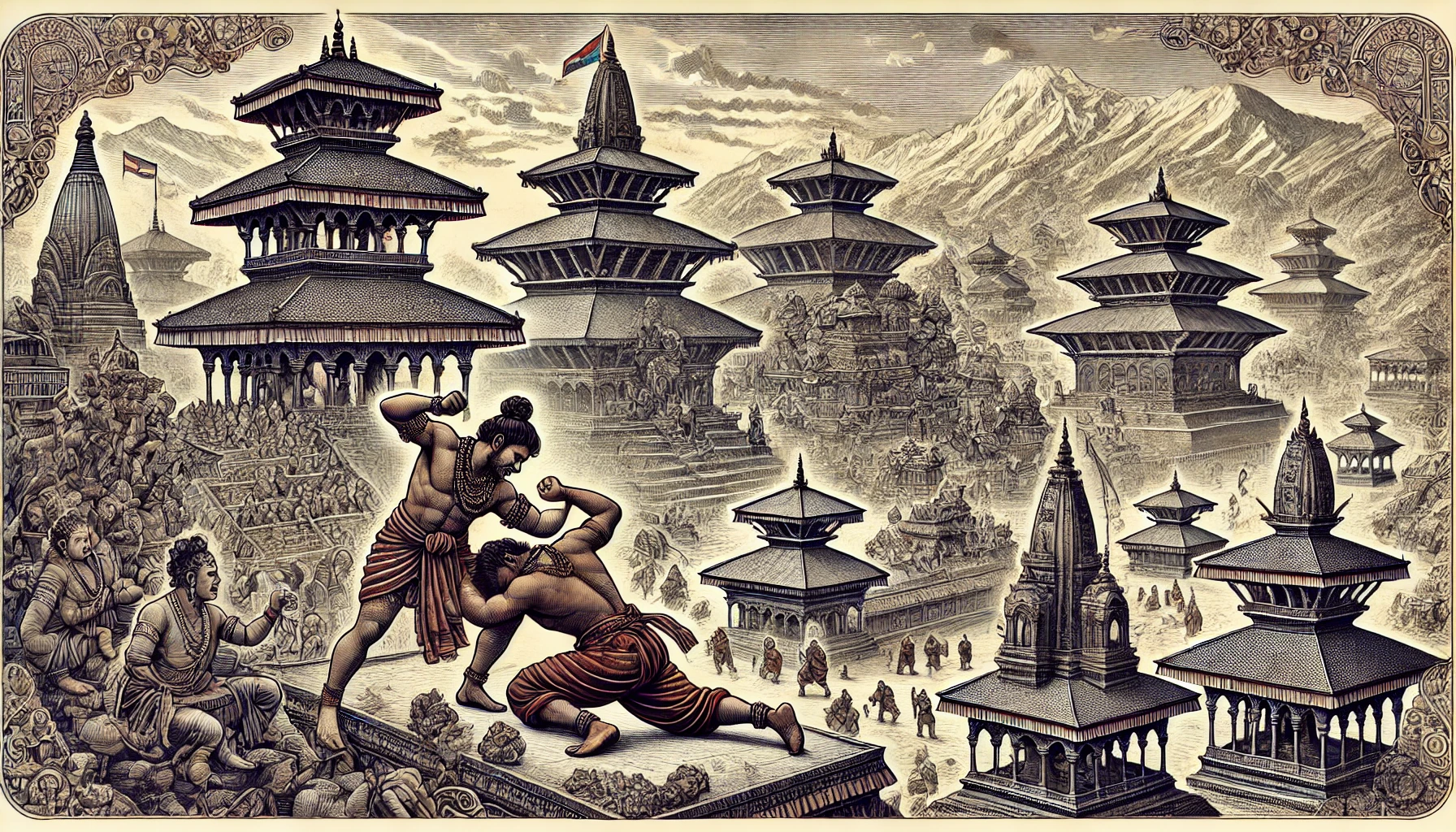The Malla dynasty holds a crucial place in the history of South Asia. They were prominent, particularly in the regions of Nepal and Northern India. They were known for their courage and cultural contributions. The rulers were influential in shaping the political and social landscape of their time. The term Malla itself means “wrestler” or “champion,”. The dynasty was known for its martial tradition, which included the famous Malla Yuddha or wrestling.
- The tribe is historically significant.
- Malla Yuddha is an ancient form of wrestling.
- The rulers contributed to culture and architecture.
The Malla dynasty’s influence extended beyond warfare. It played a crucial role in the cultural and religious developments of the region. The Malla era history of Nepalese is particularly noteworthy for its contributions to art, architecture, and the preservation of traditional practices. The people of Nepal are still celebrating the lasting legacy of the Mallas, whose rule has made an indelible mark on the country.
| GS Paper | General Studies Paper I |
| Topics for UPSC Prelims | Malla tribe history, Features of Malla Yuddha (traditional wrestling), Cultural significance |
| Topics for UPSC Mains | Political role of the Malla tribe, Influence on regional power dynamics, Evolution of Malla Yuddha |
History of Mallas in India
Historians believe that the Malla dynasty originated in the Mithila region, which is now located in modern-day Bihar, India. The dynasty rose to prominence between the 12th and 18th centuries, especially in Nepal. The Mallas were known for demonstrating administrative skills, military prowess, and fostering the arts. The term first became associated with kings during the medieval period in Nepal, where the kings ruled over the Kathmandu Valley.
Mallas in Northern India
The tribe of warriors known as the Mallas from Northern India was recognized. They were part of the republican states in the Gangetic plains, known as Mahajanapadas, around 600 BCE. The Mallas were one of the sixteen powerful states of that era. Their territory was located in present-day Uttar Pradesh, with Kushinagar being one of their prominent cities. The kingdom also earned a reputation for its military strength, frequently participating in battles with neighboring states such as Magadha and Kosala.

Malla Yuddha: The Martial Tradition
Malla Yuddha is an ancient form of combat sport that originated with the Mallas. One practices one of the oldest forms of wrestling not only for physical fitness but also as a way to prepare warriors for battle. The term Malla Yuddha translates to “wrestling combat.” It is a competitive sport where the warriors would demonstrate their strength, agility, and combat skills. Such a form of wrestling, deeply rooted in Indian martial traditions, has influenced various other forms of wrestling and martial arts in the subcontinent.
Techniques in Malla Yuddha
The techniques used in Malla Yuddha are diverse and include grappling, joint locks, and submission holds. The emphasis is on both offensive and defensive strategies, making it a comprehensive form of combat. Malla Yuddha is not just about brute strength but also about technique, endurance, and intelligence. Multiple generations have passed down the tradition, which continues to play a significant role in India’s martial history.
History of Malla Dynasty in Nepal
The Malla era history of Nepalese is a golden period in the history of Nepal. The kings ruled over the Kathmandu Valley from the 12th to the 18th centuries. Their reign is marked by remarkable achievements in art, architecture, and culture. The period saw the construction of many temples, palaces, and public buildings, many of which still stand today as symbols of Nepal’s rich cultural heritage.
Cultural Contributions
The Mallas were great patrons of the arts. During their rule, the Kathmandu Valley became a hub of cultural activity. The kings encouraged the creation of intricate sculptures, wood carvings, and paintings. The Mallas fostered the flourishing of the Newar culture, renowned for its vibrant festivals, music, and dance forms that are still celebrated in Nepal.
Architectural Marvels
One of the most notable contributions of the Mallas is the development of the unique architectural style in the Kathmandu Valley. The kings built many temples and palaces. They are characterized by their tiered pagoda-style roofs, intricately carved wooden windows, and beautifully decorated courtyards. The Durbar Squares in Kathmandu, Bhaktapur, and Patan are UNESCO World Heritage Sites that showcase the architectural brilliance of the period.
Religious Influence
The Malla rulers were spiritual Hindus and Buddhists. They played a key role in the religious life of the region. They built numerous temples dedicated to Hindu gods and goddesses, as well as stupas and monasteries for the Buddhist community. The era is also recognized for fostering the harmonious coexistence of Hinduism and Buddhism. Both religions influenced each other in art, architecture, and rituals.

The Legacy of the Mallas
The Mallas’ legacy is deeply embedded in the cultural and historical fabric of Nepal and Northern India. Their contributions to art, architecture, and religious life have left a lasting impact. The Malla Yuddha is celebrated as a symbol of their martial tradition. The Malla era history of Nepalese remains a source of pride for the people of Nepal.
Influence on Modern Culture
The modern Nepalese culture still reflects the influence of the Mallas. Festivals, traditions, and architectural styles developed during the period remain integral to Nepalese society. The preservation of Malla-era monuments and the continued practice of Malla Yuddha are testaments to the enduring legacy of this great dynasty.
Conclusion
The Malla dynasty has a rich history, cultural achievements, and martial traditions. It is an important chapter in the history of South Asia. From the Malla Yuddha to the Malla era history of Nepalese, the Mallas have left a legacy that continues to inspire and influence the region. Their contributions to art, architecture, and religion have enriched the cultural heritage of Nepal and Northern India. It made the Mallas a dynasty worth studying and celebrating.
| Malla UPSC Notes |
| 1. The Malla dynasty, known for its martial traditions, ruled Nepal and parts of Northern India, significantly influencing regional culture and history. 2. Malla Yuddha, an ancient wrestling form practiced by the Mallas, emphasized strength, technique, and endurance, contributing to India’s rich martial arts tradition. 3. The Malla tribe, one of the sixteen Mahajanapadas, played a crucial role in early Indian history, particularly in the region of modern-day Uttar Pradesh. 4. The Malla era in Nepal, spanning the 12th to 18th centuries, is celebrated for its contributions to art, architecture, and cultural development. 5. The architectural style developed during the Malla era, characterized by pagoda-style roofs and intricate woodwork, remains a hallmark of Nepal’s cultural heritage. 6. The Malla period in Nepal is notable for the harmonious coexistence of Hinduism and Buddhism, influencing the region’s religious and cultural practices. |


